Homalco Wildlife Tours is the result of a unique journey from conservation efforts to save local salmon to the creation of a world-class First Nations-owned ecotourism business.
Homalco Wildlife Tours: Going Home to Bute Inlet
Estimated Reading time

14 Mins
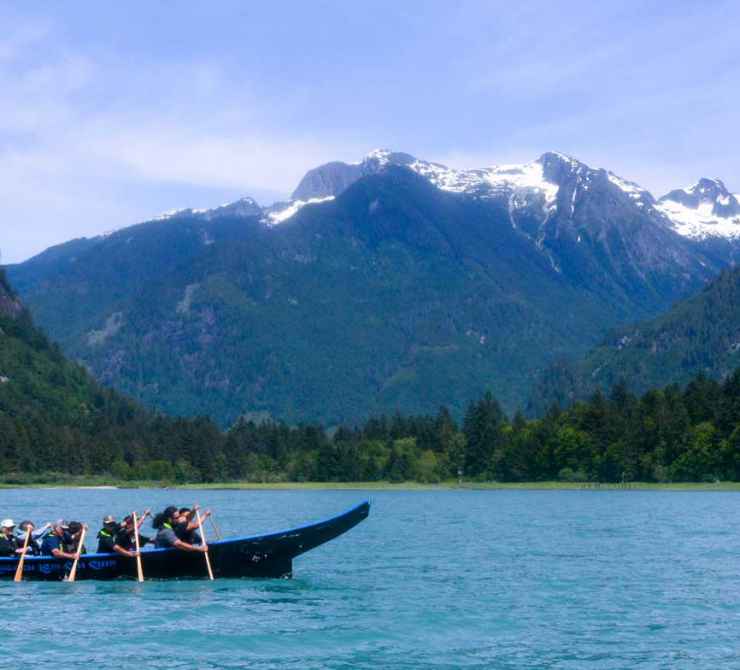
Orford River Valley
The mouth of the Orford River in Bute Inlet is a former village site of the Homalco Nation and has cultural, ecological, and economic importance to the Nation.
At a Glance
Located remotely in the Bute Inlet of British Columbia, the Orford Valley is a former village site of Homalco First Nation in their traditional territory. It is a special place with spectacular scenery and thriving wildlife.
The Algard Creek that runs through the valley was at risk of completely losing its salmon stock. In response, the Homalco Nation built a hatchery and reinforced the river banks, protecting the habitat and enhancing salmon populations. This conservation work led to an abundance of bears in the area and the unique opportunity to develop a wildlife viewing business.
To Bring the Bears, First Save the Salmon

Today, Homalco Wildlife Tours is a world-class wildlife viewing and cultural experience tour provider. “Business is booming,” says Shawn O’Connor, Homalco Wildlife Tours CEO. “In 2015, we had more business in shoulder season than the peak season of 2014.”
The start of the tourism operation had nothing to do with wildlife viewing, however. The business began with the long-term efforts of the Homalco people to restore and protect the Algard Creek located in the remote traditional territory of the Nation. To combat reduced salmon runs, members of the Nation proactively sought to establish a hatchery in the river to restore the salmon population.
“In the 1980’s the Homalco people starting enhancing salmon stocks in the Orford Valley by establishing a hatchery,” explains Alison Trenholm, Director of Governance for the Homalco First Nation. “It started out as a fairly small operation that allowed us to provide training and employment opportunities for Homalco members. It also enabled us to harvest food stocks, rear eggs, and release the fry to support the continued growth of the salmon population there.”
We wanted to see if we could build on the return of the bears and create an opportunity to invite the world in to enjoy the wildlife that was now thriving there.
The boosted fish population had an unexpected but welcome spin off effect — the return of a grizzly bear population to the valley. “Over time, with the increased numbers of salmon returning to that river system, our crew saw a year-to-year increase in the number of bears, explains Trenholm. “We wanted to see if we could build on the return of the bears and create an opportunity to invite the world in to enjoy the wildlife that was now thriving there. It led us to develop Homalco Wildlife Tours.”
Creating Homalco Wildlife Tours
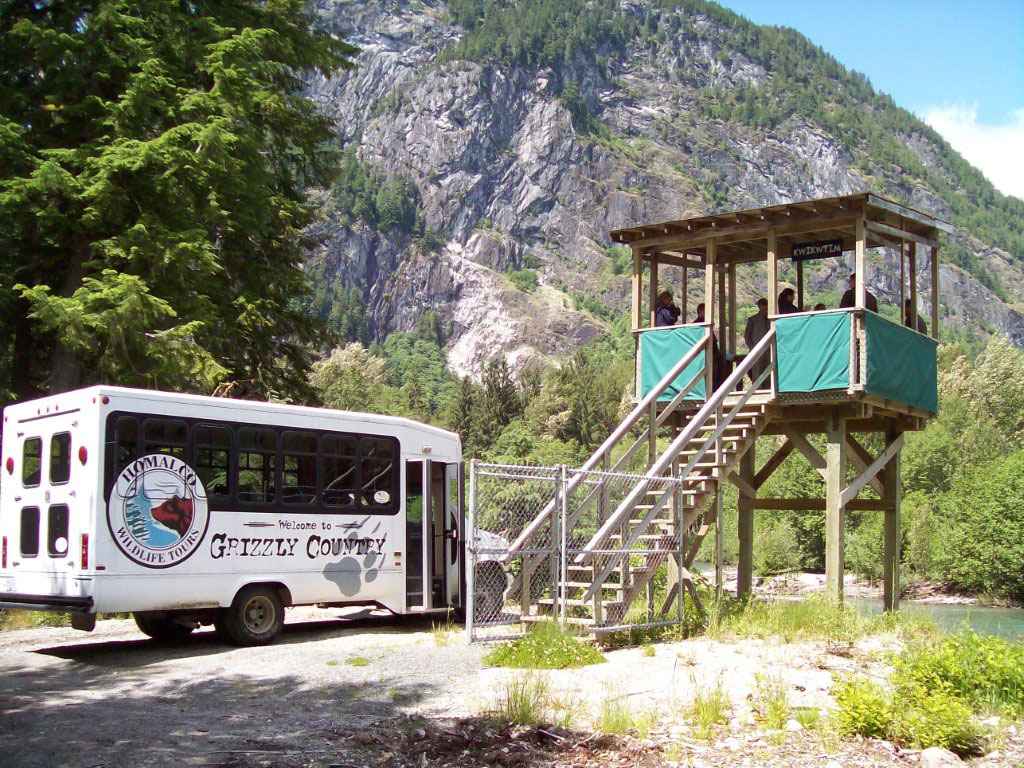
In 2009, Homalco capitalized on the increase in bears to the valley by investing in infrastructure to upgrade the Orford Bay Hatchery and to develop a program for safe wildlife viewing. It was the first of several phases to ensure that people and bears would be protected from one another, and that the environmental conditions to support a tour business would be sustainable.

After this preliminary work, Homalco Wildlife Tours opened and welcomed guests from around the world to visit the spectacular wildlife of the Orford Valley, located two-hours by boat from Campbell River. Homalco Nation members were hired to be tour guides and the operation partnered with existing tour operators and Sonora Resort, a nearby five-star hotel. Management continued to look ahead and make key decisions to create a sustainable business that would best serve their visitors.
“When we first started the tours we purchased a boat that would allow us to lead our own right from the dock in Campbell River to the Orford valley and back,” explains Trenholm. However, this model stretched the capacity of the new organization and created unnecessary competition with existing wildlife tour businesses based out of Campbell River.
“We realized it didn’t make sense for us to be competing with the existing tour operators,” says O’Connor. “They were already doing advertising and promotion, and they already had the capital and infrastructure to transport visitors from Campbell River. So we decided to work together instead.”
An alternate model was developed which allowed existing tour operators guaranteed times to arrive at the Orford Valley with visitors and take a tour on site with Homalco Wildlife Tours. “We decided to focus on the partnerships with the operators out of Campbell River to have them transport the guests to the valley,” says Trenholm. “Then we would take over.”
This change allowed Homalco to focus on providing an outstanding wildlife tour once guests arrived on the dock at Orford Valley. “It really allowed for a growth in visitors, because we have multiple tour operators working with us, and we’ve seen a huge increase since then,” says Trenholm. “It allowed us to expand but also gives us an opportunity to improve the experience and what we need to be doing on the ground to be able to provide a world class experience for visitors.”
Investing in Youth with Cultural Tourism
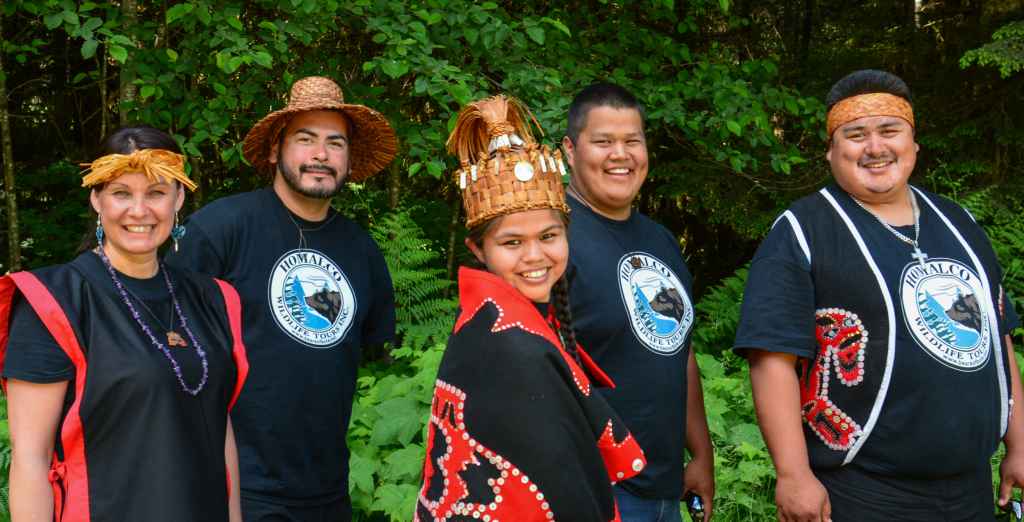
Since opening, Homalco has continued to expand its wildlife tour offerings. “We had to increase our capacity to meet demand,” explains O’Connor. “We needed more infrastructure to be able to host larger groups.”
The limited wildlife viewing season prevented the operation from expanding to its full potential, however. “We were very busy in the autumn, when the bears are feeding on the salmon before hibernating for the winter,” explains O’Connor. “But we don’t have many bears visiting the Orford Valley in the spring and summer. We knew it was important to develop the shoulder season somehow.” The Nation also wanted to provide more stable employment to its tour guides and other Homalco Wildlife Tour employees.
“All of our crew out there are Homalco members, and this business has provided long-term employment,” explains Trenholm. “However, because the wildlife viewing tours are seasonal, we wanted to build the shoulder season so we can create a longer term of employment.”
The answer was in the Homalco tour guides themselves. They were trained to run cultural tours that showcased the history, language, songs, stories, and dances of Homalco First Nation. “That’s where the cultural tours come in. They’ve helped to grow Homalco Wildlife Tours and that’s been really great to see,” explains Trenholm.
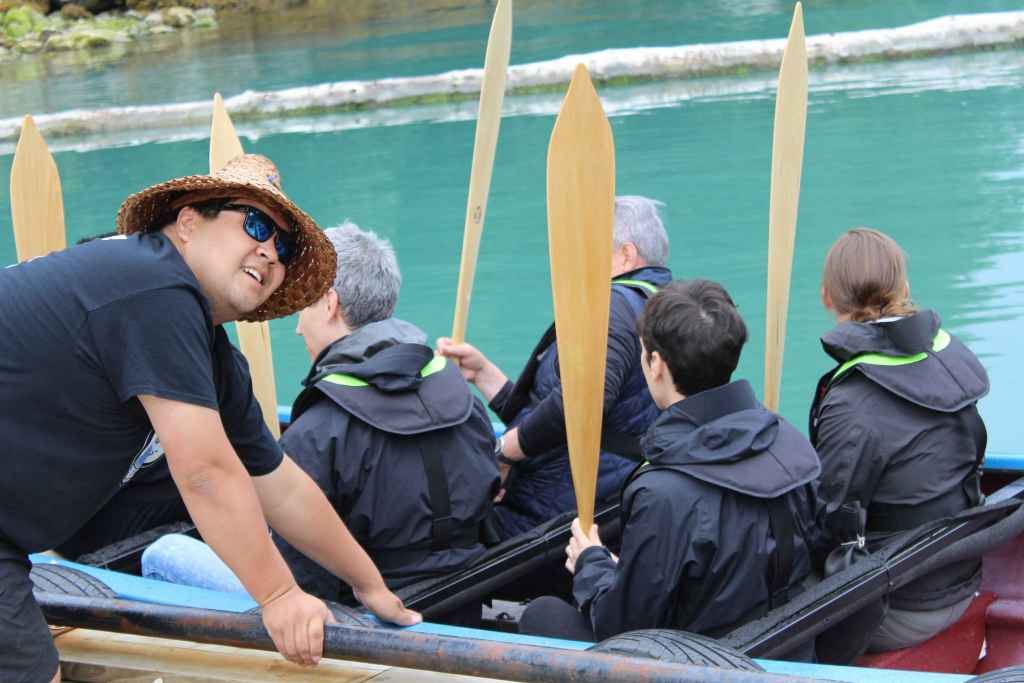
With support from Coast Funds, Homalco invested in developing a spring and summer cultural tourism operation in 2015. This project included an intensive three week training program to develop the capacity of the Homalco youth guides and to reinvigorate their connection to Homalco culture.
This opportunity was especially important to the Nation, whose members are spread across Vancouver Island and other parts of BC and whose cultural traditions have not been recently practiced. “When they came back home to the community, and they did their introductions in the Homalco language and the welcome they would be providing to guests, and sang our songs and participated in the dances, it was just amazing,” says Trenholm. “It’s an extremely powerful experience to see their enthusiasm and know that there’s a revitalization taking place and a strong desire to learn.”
It’s an extremely powerful experience to see their enthusiasm and know that there’s a revitalization taking place and a strong desire to learn.
O’Connor, who works closely with the youth guides, agrees. “A lot of them talk about how this experience has changed their lives, and how reconnecting with their culture has helped them to see different paths,” he says. “We are hoping it will encourage them to go to post-secondary school and that they will come back and work for the tour group again.”
The overwhelmingly positive feedback from visitors on the cultural tours has also led to the decision to include parts of them during the wildlife tours. “We’ve had our outfitter partners who have done the cultural tours tell us it was really amazing,” says O’Connor. “So, moving forward, we are going to incorporate the traditional welcome at the start of all our tours now.”
Looking forward, Homalco Wildlife Tours will continue to improve its tour offerings as it grows. “It’s been really wonderful to see the growth of that operation over the last seven years,” says Trenholm. “There’s been a lot of support, including from Coast Funds, which has allowed us to create a world-class experience through the development of the infrastructure and the towers, the orientation centre, and capacity development and planning. It’s been incredibly positive.”
Key Challenges and Successes
Managing Growth while Respecting Bear Habitat:
Throughout its evolution, leadership at Homalco First Nation have continued to prioritize the integrity of the Orford Valley animal habitat along with the growth of Homalco Wildlife Tours. It’s a challenge faced by any operation that involves close proximity between wildlife and humans.
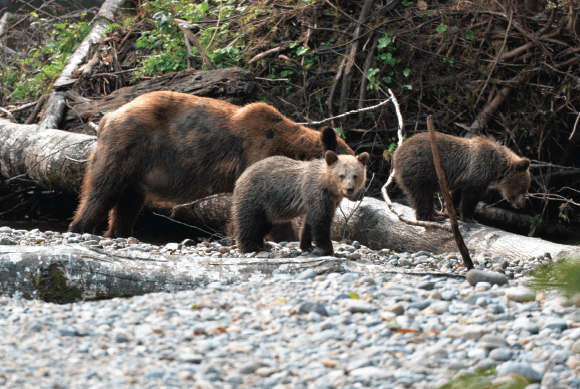
“It is a fine balance between managing the growth of the operation and ensuring we are not disturbing the bear habitat,” explains Trenholm. “We have always really tried to make sure that the tours are managed in a way that continues to make the wildlife comfortable.”
To accomplish this, the Nation has invested in field research to conduct a grizzly and black bear habitat study. This research helps the Nation understand the habitat use of the bears and avoid negative impacts on the bear population as the tour operation continues to develop. “It’s really important that we’ve done this study,” says O’Connor. “We were considering building an additional viewing tower in one location and learned that we should not develop there. The bear expert advised us that this area was a sanctuary for the bears, and so we have decided against encroaching there.”
Consideration of the bears’ habitat is an investment in the business as well as it keeps the bears around. “We’re continuing to see high numbers of bears returning, so I think we’re managing that well,” says Trenholm. “Last year we had three sets of triplet bear cubs.”
Long Term Partnerships:
A key success for Homalco Wildlife Tours has been the development of supportive, mutually beneficial partnerships. “We have really good relationships with the tour outfitters in Campbell River,” says O’Connor. “They do the advertising and marketing, which means we don’t have to invest as much into those areas. It allows us to concentrate on our wildlife and cultural tours.”
A crucial partner has been Sonora Resort, a luxury resort located on Sonora Island near the entrance to the Bute Inlet. “Every year in the fall, many of our guests journey from the resort up to the Orford River where the Homalco Wildlife Tour Guides provide our guests with information about the history of the Homalco people, their traditional lands, and the unparalleled viewing experience of Grizzly bears that feed on the abundant salmon,” says Wynn Powell, President and CEO of Relais and Chateaux, the parent company of Sonora Resort.
“Our partnership with Sonora Resort has been extremely supportive,” says O’Connor. “They compensate in advance which gives us working capital to prepare and do pre-season expenditures and they’ve also offered us training assistance, which has helped us provide a world-class tour experience.”
Economic Outcomes
Homalco Wildlife Tours is a successful wildlife and cultural tour business that is owned and operated by Homalco First Nation. Investments in infrastructure for the business have increased the capacity of the tour operations and Homalco Wildlife Tours has set a new record occupancy each year.
In 2015, the cultural tourism expansion of Homalco Wildlife Tours reduced the dependence of the business on the seasonal wildlife viewing and increased the operating season length from 74 days in 2014 to over 170 days in 2015.
Five partnerships have been created with tour outfitters in Campbell River and one partnership with a luxury lodge has been created. These partnerships also support numerous non-First Nation tourism businesses in the Campbell River and Vancouver Island regions.
Learn more about infrastructure investments.
Cultural Outcomes
Homalco members have not had access to their traditional village sites since being relocated in the 70’s. As a result, their cultural traditions have not been shared and practiced by the community regularly in the recent past.
Establishing Homalco Wildlife Tours has enabled members to access this traditional village site. “We always try to create an opportunity for community members to visit the area and to keep them connected with their territory,” explains Trenholm. “This operation provides a wonderful stopping point along the way to share that with them.”
Homalco Wildlife Tours has also helped to re-connect Homalco youth to their culture by training them as tours guides. This process has led to a resurgence of the Homalco language, songs, dances, and stories, which are now being shared with visitors from around the world.
Learn more about youth programs.
Environmental Outcomes
Protection and restoration of the Orford Valley has been integral to the vision of Homalco Wildlife Tours. The creation of the hatchery and the reinforcement of the river bank protected local salmon stocks that would have been wiped out without intervention. The enhanced salmon stocks also support Grizzly and Black Bear populations in the area.
Homalco Nation has also invested in a bear habitat and DNA study to understand the population dynamics of the bears in their territory. “We want know to how many bears there are, which ones are returning and which ones are new,” says Trenholm. The study will help the Nation understand changes in the population and how the tour operations may affect the bears.
“The study is going really well,” says O’Connor. “We have cameras deployed in the field to take photos of the bears that we use to identify individual bears’ hair snags. We are going to get a really good idea about the size and health of the population.”
Learn more about wildlife research.
Social Outcomes
Homalco Wildlife Tours provides long-term employment for Homalco members as wildlife and cultural tour guides. The business has created five permanent full time positions, eight permanent seasonal positions, and supported 22 positions for the expansion and development of the tours.
The operation provides training opportunities for employees in tourism, including hospitality-related mentoring from the staff at the five-star Sonora Resort.
Learn more about job creation.
Between 2009 – 2015, Coast Economic Development Society approved four projects totalling $735,100 and Coast Conservation Endowment Foundation Fund approved one project of $70,000.
Online Resources
- Homalco Wildlife and Cultural Tours Announces Expansion
Coast Funds, April 2021 - Xwémalhkwu (Homalco) First Nation Purchases Residence at Homathko Camp
Coast Funds, August 2020 - Homalco Wildlife & Cultural Tours Featured in Canadian Geographic
Coast Funds, December 2019 - British Columbia has a flourishing grizzly bear tourism industry
Public Radio International, Jan 2018 - Working Together: Tourism, First Nations, and Forestry.
Truck Logger BC Magazine, Fall 2015. - Profile: Homalco Wildlife Tours Inc.
Aboriginal Tourism BC, 2015. - Homalco Wildlife Tours Reviews.
TripAdvisor, 2016. - Homalco debut new Bears of Bute orientation centre.
Campbell River Mirror, August 2011. - Orford River Roars to Life with Grizzly Bear Tours.
Globe and Mail Article, 2011. - 5 Tribal Lands Where You Can Stalk Wild Animals—With a Camera.
Indian Country Today Media Network, August 2015
Published On March 6, 2016 | Edited On January 24, 2023


